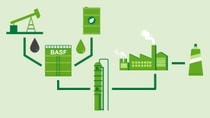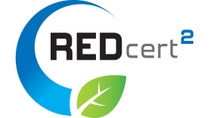Sustainability
BASF’s biomass balance approach
BASF has broken new ground with the development of the biomass balance process for the use of renewable raw materials in the chemical industry. This approach allows fossil raw materials to be replaced by renewable raw materials in BASF's Production Verbund. In contrast, certificate trading completely separates the use of biomass from in-house product manufacture.

How does the biomass balance approach work?

Certified renewable feedstock
In the biomass balance approach, renewable resources such as bio-naphtha or biomethane derived from organic waste, crops or vegetable oils are used as feedstock in the very first steps of chemical production. The bio-based feedstock amount is then allocated to specific products sold by means of the certified method.

Independent certification
BASF has established a closed chain of custody from the renewable feedstock it uses through to the final product. An independent certification confirms that BASF has replaced the required quantities of fossil resources for the biomass balanced product with renewable feedstock. BASF’s biomass-balanced products are certified according to either the Redcert2 or the ISCC Plus certification scheme.




